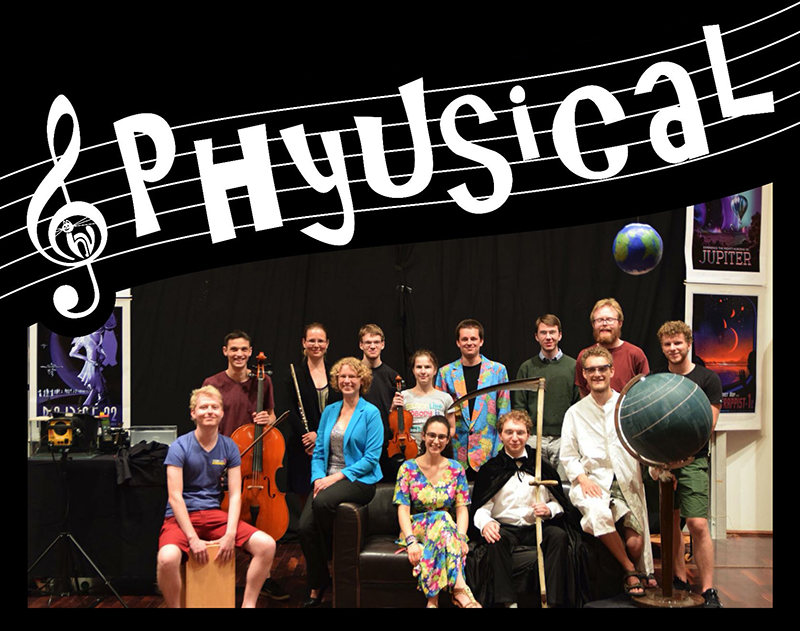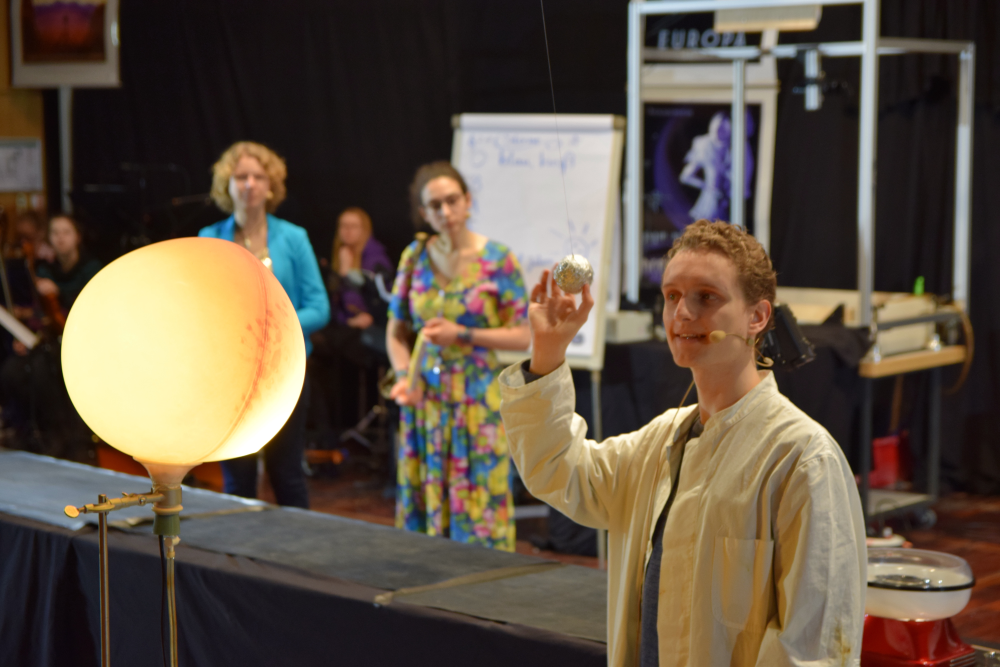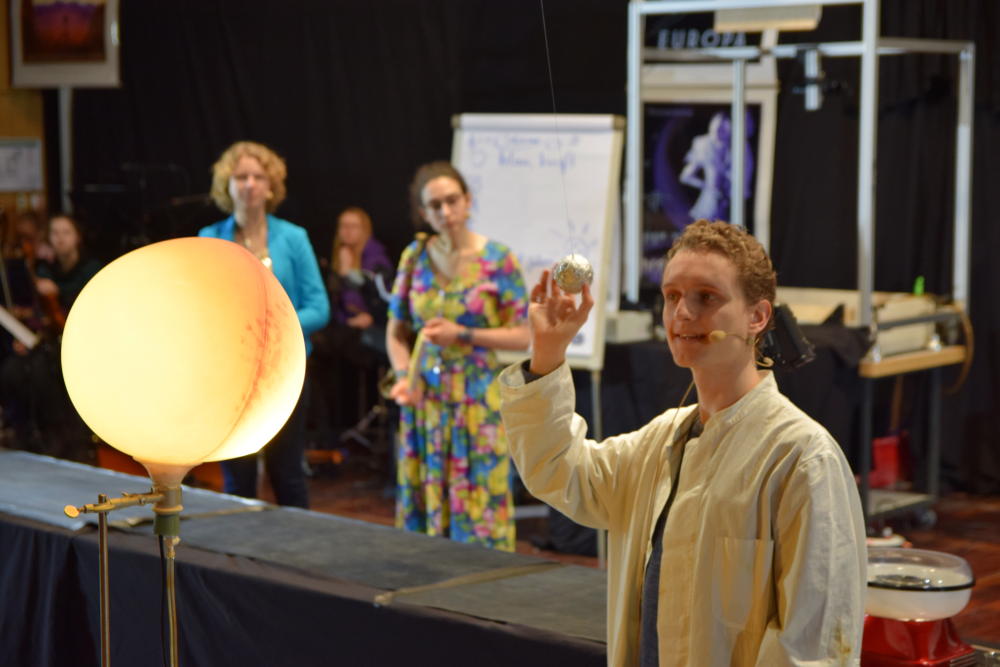Curtain Rises on a “Phyusical”
The 29th of February 2020 did not turn out as Jana Heysel had hoped. The then physics Ph.D. student at the University of Bonn, Germany, started her day full of excitement as she prepared to take part in what was meant to be the second-ever performance of a “phyusical,” a musical that contains live physics demonstrations. But then officials from Bonn, where the show was to be performed, confirmed the city’s first COVID-19 case and the plans came crashing down. “We decided to cancel one hour before the show was meant to start,” Heysel says.
Now, more than two years later, Heysel and her fellow performers are again gearing up to take to the stage to perform the show, titled Planetamos, which Heysel cowrote with the group. Currently they have three dates confirmed at the University of Bonn in August. These performances will mark the beginning of what the group hope will be a Germany-wide tour of Planetamos. “The plan had always been to take the show on the road, and now we potentially can,” says Herbert Dreiner, a particle physicist, also at the University of Bonn, who has been helping students put together physics-based shows for over two decades.
Planetamos, like many other out-of-the-box ideas, was born over a beer. Heysel and other students were celebrating their successful performance of another physics-based show, What’s [the] Matter?, which is a play about particle physics that contains 28 different physics demonstrations. During the aftershow party, some of the students started singing songs and the idea for a phyusical bubbled up as a joke, Heysel says. It was later made more concrete in the spring of 2018. “To the best of our knowledge this is the first physics show with live experiments and live song and orchestra,” Dreiner says.
Initially, the show contained just three songs and a couple of physics demonstrations. But, Heysel says, the cast’s family and friends were so positive about an exclusive preview in 2019 that the group decided to write a full-length show, adding four more songs and a dozen live experiments. The script for this feature-length Planetamos, along with the details of all the experiments, was recently published on the arXiv in German (its original language) and in English.
Planetamos is set in a universe where people can buy planets. A couple, who go by the nicknames of Vita (Life) and Mortis (Death), visit their local planet-building store, called Planetamos, where they hope to find all the furnishings that they need to make their new planet habitable. As the duo add items to their cart—such as a nearby star to provide light and warmth, seasons to add variety to the climate, and an atmosphere to help sustain water—the audience learns all the physical requirements for life to develop and thrive in a world.
Each of these requirements is illustrated through an on-stage physics demonstration carried out by the phyusical’s cast. For example, to show how chunks of matter can form in a cloud of dust—a process that must happen for there to even be a planet—the cast use a cotton candy machine. The sticky bonds that cause sugar grains to clump together into a messy candy are like the intermolecular forces that help dust particles coalesce into dense lumps.
In another scene, the cast demonstrate the habitable zone, which is the range of star-planet distances over which liquid water can persist on a planet’s surface. The star is represented by a balloon containing a lamp and the planet by a ball wrapped in foil. Initially, the balloon is small and the lamp red, representing a red dwarf star. As such, the balloon puts out a meager amount of energy, so the ball must swing around in tight circles to avoid freezing. The cast then slowly inflate the balloon, switching its color to yellow then to blue, signifying more energetic stars. The ball, in response, must orbit at farther distances to keep from boiling. “It’s a very simple experiment, but it works really well in the show,” Dreiner says. In the background, while the demo is going on, “Jupiter” from Gustav Holst’s The Planets plays.
The show ends with a musical number set to the melody of the “Circle of Life” from Disney’s The Lion King—all the song lyrics in the show are accompanied by well-known tunes. “In the circle of life, with the world proceeding, with the sun and the stars and a silver moon. Our world is a part of a complex cosmos, and we circle in the circle of life,” cast members sing.
–Katherine Wright
Katherine Wright is the Deputy Editor of Physics Magazine.







